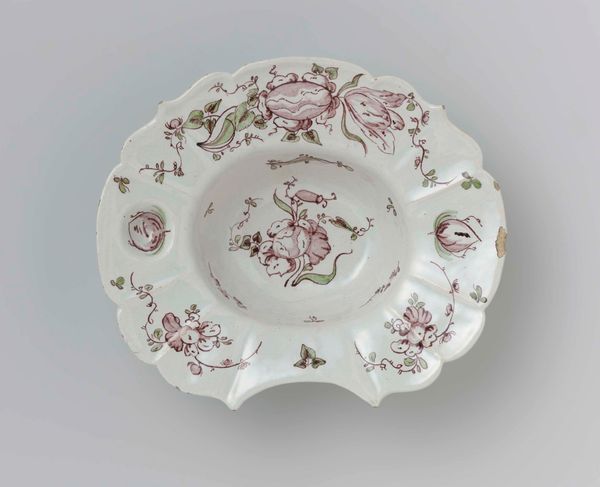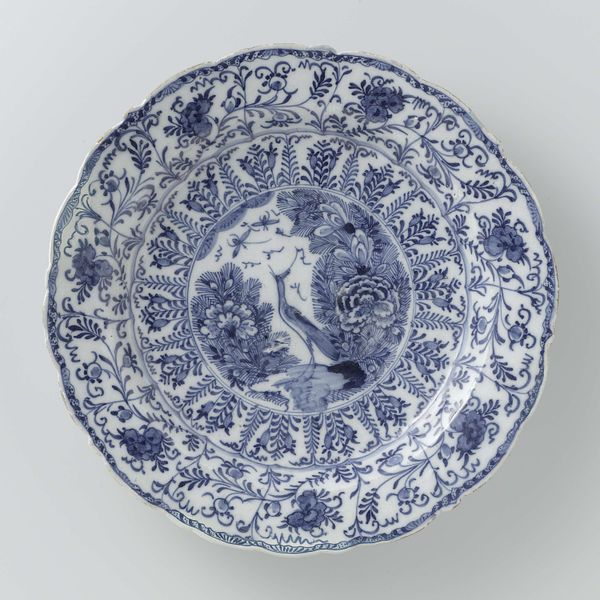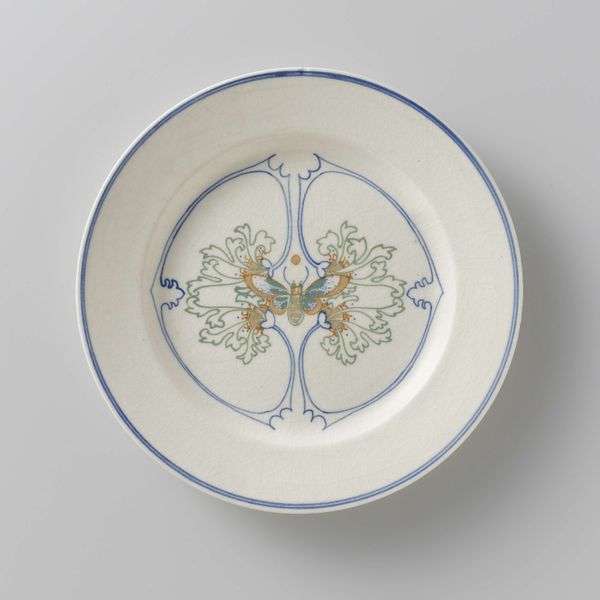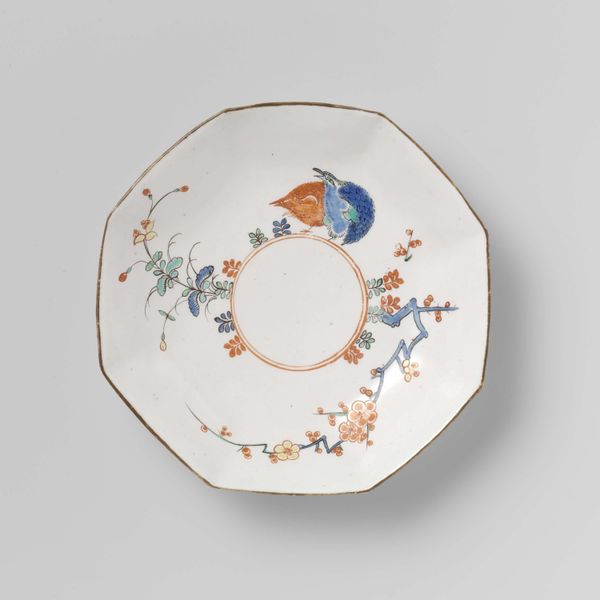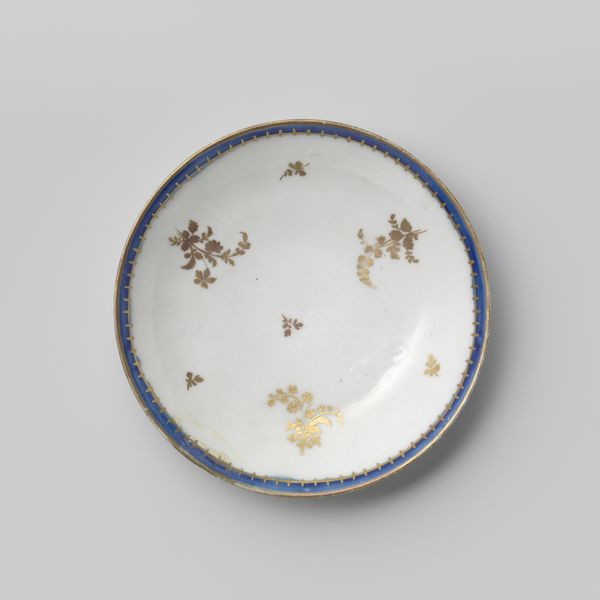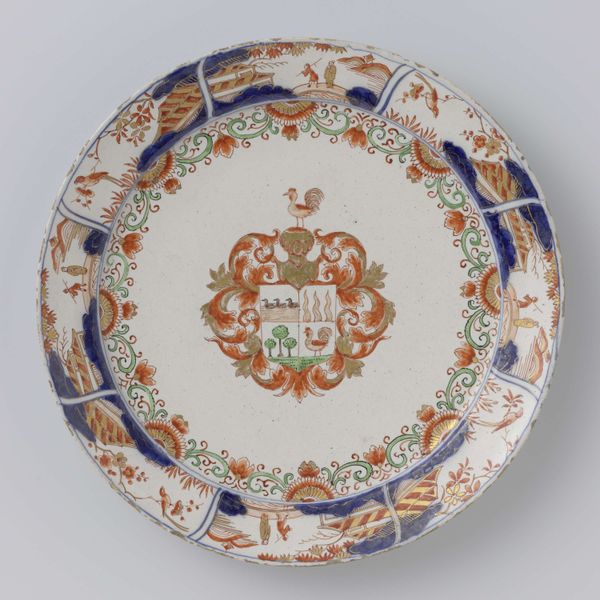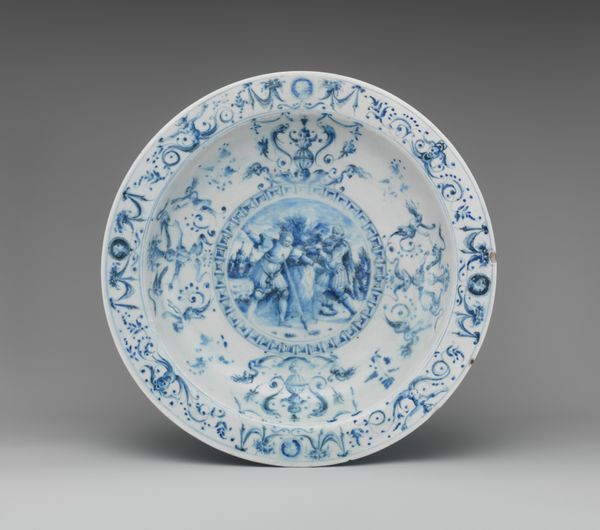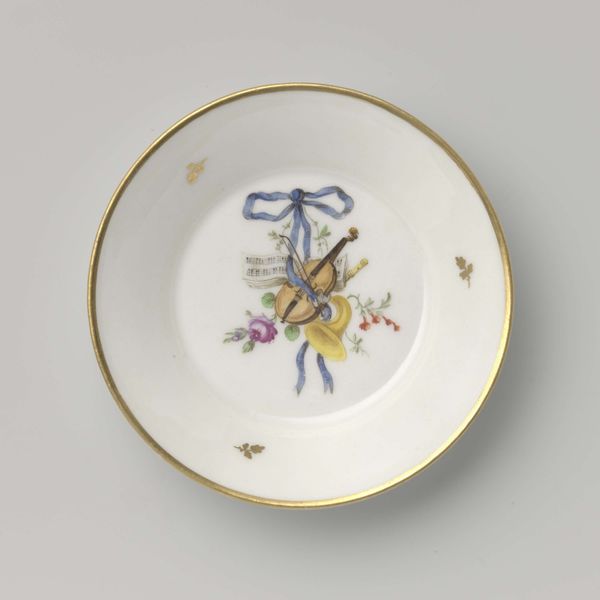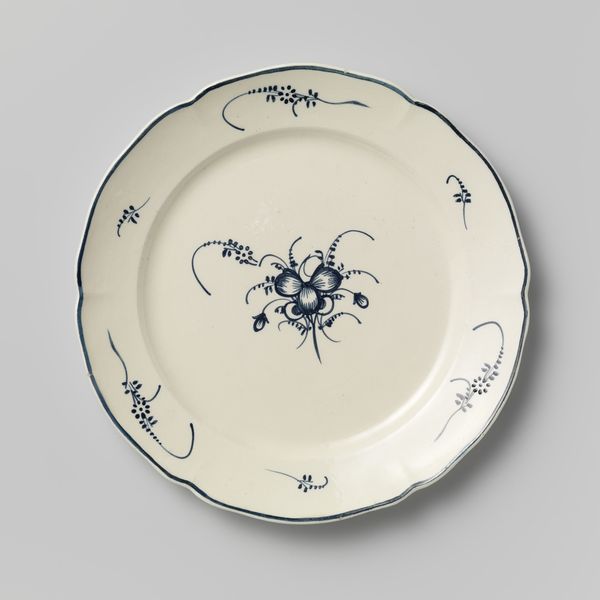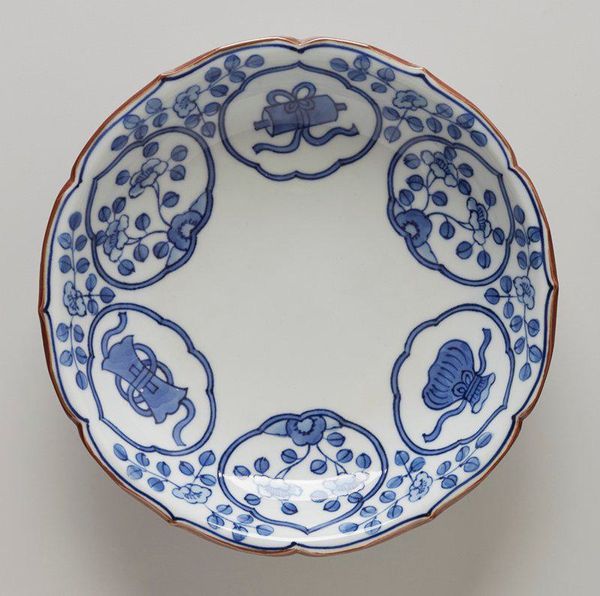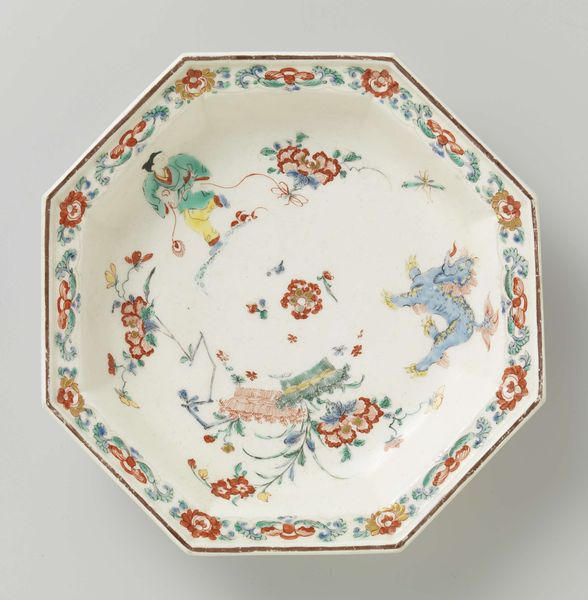
ceramic, earthenware
#
pottery
#
dutch-golden-age
#
ceramic
#
earthenware
#
stoneware
#
ceramic
Dimensions: diameter 23.2 cm, height 3.3 cm
Copyright: Rijks Museum: Open Domain
Editor: Here we have a 'Bord,' a ceramic earthenware plate, made sometime between 1760 and 1780. It has a dreamy quality, with its soft blue hues and delicate floral patterns. What stories or cultural meanings do you see embedded in this object? Curator: This isn't just a plate; it's a visual echo of Dutch Golden Age sensibilities trickling into later periods. Notice how the central flower isn't botanically accurate. It's a stylized ideal, reflecting a human desire to perfect nature, which says a lot about the philosophical leanings of the time. Do you see any repeated motifs? Editor: Yes, the stylized flower, appearing in the center and again in sections along the rim, feels almost like a stamp or a repeated emblem. Curator: Precisely. Think about what that repetition signifies. Is it purely decorative, or does it also serve as a kind of quiet pronouncement, a visual mantra that reinforces certain values or aspirations of the owner or society? Such patterns often function as silent cultural anchors. Consider Delftware: What visual associations does this piece evoke for you in terms of memory and recognition? Editor: It makes me think about a connection to nature but one filtered through the lens of craftsmanship and design rather than something purely wild. I appreciate the quiet confidence this plate displays. Curator: That blend of nature and artifice is key. These objects are never just functional; they're powerful carriers of encoded meanings that invite us to remember and reflect on our collective history. It goes beyond simple appreciation into deeper questions.
Comments
No comments
Be the first to comment and join the conversation on the ultimate creative platform.
